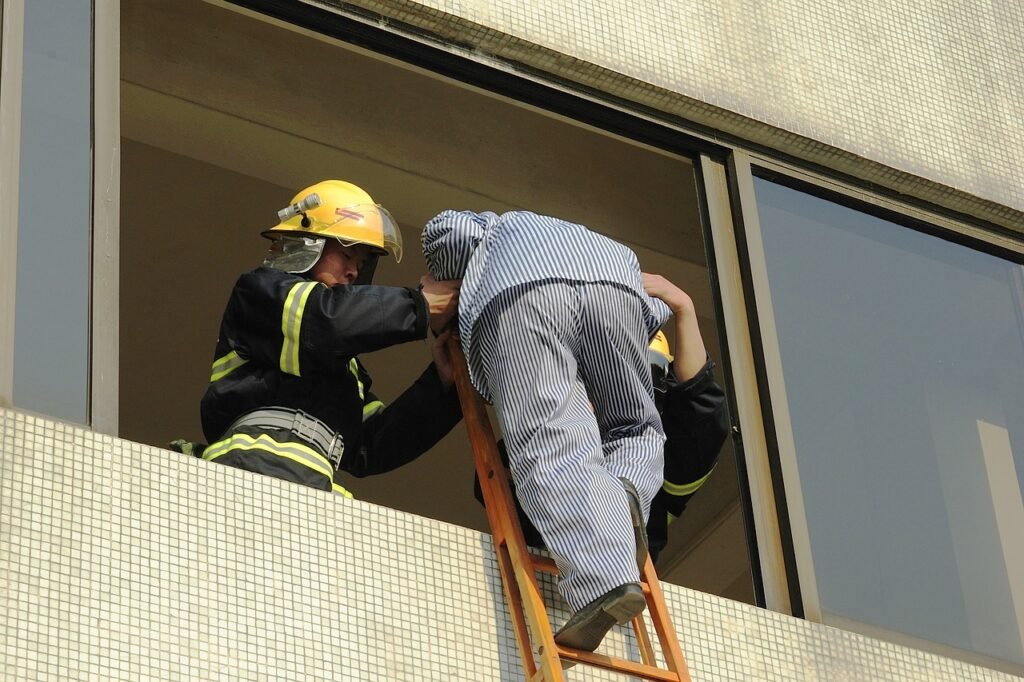Imagine never having to remember passwords or carry around keys again. With the convenient and secure Facial Recognition Safe, accessing your belongings has never been easier. This state-of-the-art safe harnesses the power of biometric technology to grant you access simply by scanning your face. No more fumbling for keys or worrying about forgetting a combination. Whether you want to keep your valuables safe or ensure no unauthorized person enters your premises, this facial recognition safe provides the perfect solution. Its advanced features not only make access seamless but also guarantee the utmost security for your belongings. Say goodbye to keys and say hello to convenience and peace of mind with the Facial Recognition Safe.

This image is property of images.unsplash.com.
Introduction to Biometric and Facial Recognition Safe
Biometric technology has revolutionized the field of security, offering a high level of convenience and enhanced security measures. Among the various biometric technologies, facial recognition stands out as one of the most versatile and efficient methods for identification. In this article, we will explore the concept of biometric technology, delve into the specifics of facial recognition, and highlight the advantages of using biometrics for security purposes.
Understanding biometric technology
Biometric technology uses unique physiological or behavioral characteristics to identify individuals. These characteristics can include fingerprints, retina or iris patterns, voice patterns, and facial features. By analyzing and comparing these unique identifiers, biometric systems are able to accurately authenticate and grant access to authorized individuals. Biometric technology has gained popularity due to its accuracy, convenience, and ability to eliminate the need for passwords or physical keys.

This image is property of images.unsplash.com.
Overview of facial recognition technology
Facial recognition technology is a subtype of biometrics that uses facial features for identification and authentication purposes. It analyzes the geometry of a person’s face, including the distance between facial landmarks such as eyes, nose, and mouth, to create a unique biometric template. This template is then compared with the stored biometric data to determine a match. Facial recognition technology has advanced significantly in recent years, with improved algorithms and higher processing power enabling faster and more accurate identification.
Advantages of using biometrics for security
Biometric technology, including facial recognition, offers numerous advantages over traditional security methods. One of the key benefits is the convenience it provides. With biometrics, there is no need to remember passwords or carry physical keys, as the unique characteristics of an individual are sufficient for authentication. This eliminates the risk of lost or stolen keys, and the hassle of regularly changing passwords. Additionally, biometric systems allow for quick and easy access, reducing waiting times and increasing operational efficiency.

This image is property of images.unsplash.com.
Convenience of Biometric and Facial Recognition Safe
Ease of use and quick access
The biometric and facial recognition safe provides a user-friendly experience, allowing for seamless access to your valuables. By simply looking at the built-in camera, the system can quickly and accurately recognize your face and grant access to the safe. This eliminates the need to fumble with keys or remember complex combinations, making it ideal for individuals who appreciate convenience and efficiency in their daily lives.
Elimination of the need for physical keys or passwords
With the biometric and facial recognition safe, you no longer have to worry about misplaced or forgotten physical keys. The safe relies solely on your facial features for authentication, eliminating the risk of unauthorized access. Similarly, there is no need to remember and regularly change passwords, as your face becomes the key to your personal belongings. This convenience factor saves you time and ensures that your valuables are secure at all times.
Ability to store multiple profiles
The biometric and facial recognition safe has the capability to store multiple profiles, allowing for shared access among trusted individuals. Whether it is for a family setting, where multiple family members need access to the safe, or for a small business environment, where various employees require secure storage, this feature ensures that authorized individuals can conveniently and securely access the safe. The ability to store multiple profiles adds another layer of flexibility to the system, catering to diverse requirements and needs.
Enhanced Security Measures
Unique identification through facial features
Facial recognition technology offers a high level of accuracy in identifying individuals based on their unique facial features. Unlike traditional identification methods that rely on physical keys or passwords, facial recognition provides a more secure solution by leveraging the distinct characteristics of each person’s face. This unique identification process significantly reduces the risk of unauthorized access and enhances the overall security of the biometric and facial recognition safe.
Difficulty in forging or replicating facial biometrics
One of the major advantages of facial recognition technology is its resistance to forgery or replication. Facial features are difficult to reproduce, making it challenging for malicious actors to bypass the security measures of the biometric and facial recognition safe. This provides an extra layer of protection against unauthorized access attempts, ensuring the integrity of your personal belongings or confidential information stored within the safe.
Integration with other security systems
The biometric and facial recognition safe can be integrated with other security systems, enhancing the overall level of protection. By linking the safe to an existing security network, such as an alarm system or surveillance cameras, real-time monitoring and authentication can be achieved. This integration allows for instant alerts in case of suspicious activity, further bolstering the security of the premises and providing peace of mind.
Real-time authentication and monitoring
The biometric and facial recognition safe offers real-time authentication and monitoring, ensuring that only authorized individuals have access to the protected assets. By continuously monitoring individuals’ faces, even after initial authentication, the system can detect unauthorized attempts to gain access. Real-time monitoring adds an extra layer of security and acts as a deterrent against potential intruders or unauthorized individuals.
Robust Authentication Process
Capture and analysis of facial features
The biometric and facial recognition safe captures and analyzes various facial features to create a comprehensive biometric template. These features include the distance between facial landmarks, such as the eyes, nose, and mouth, as well as the shape and texture of the face. The system utilizes advanced algorithms to process this data and create a unique biometric identifier for each individual.
Comparison with stored biometric data
Once the facial features are captured and analyzed, the biometric and facial recognition safe compares the obtained biometric template with the stored biometric data. The stored data consists of previously enrolled profiles, each associated with an authorized individual. By comparing the captured biometric template with the stored data, the system determines if there is a match and grants or denies access accordingly.
Factors influencing accuracy of facial recognition
While facial recognition technology offers high accuracy, certain factors can influence its performance. Lighting conditions, camera resolution, and the presence of facial accessories or alterations can impact the accuracy of facial recognition. However, advancements in technology have greatly mitigated these factors, and modern systems can achieve a high level of accuracy even in challenging conditions.
Backup authentication methods
To ensure the reliability of the authentication process, the biometric and facial recognition safe incorporates backup authentication methods. In case facial recognition fails due to factors such as poor lighting or changes in appearance, alternative methods such as fingerprint recognition or a PIN can be used as a fallback. These backup authentication methods provide an additional level of security and ensure access to the safe even in unexpected circumstances.
Applications of Facial Recognition Safe
Residential security
The facial recognition safe finds extensive use in residential settings, providing homeowners with a secure storage option for valuable possessions or important documents. By incorporating facial recognition technology, the safe offers convenient and reliable access to authorized household members while ensuring protection against unauthorized individuals.
Commercial and corporate use
In corporate environments, the facial recognition safe serves as a safeguard for sensitive information or valuable assets. Businesses can securely store confidential files, access control cards, or even cash deposits using the biometric and facial recognition safe. The ability to grant access to authorized individuals while maintaining a high level of security makes it an ideal choice for businesses of all sizes.
Banking and financial institutions
Facial recognition technology has been widely adopted by banking and financial institutions for its ability to provide secure access to customer information and assets. The biometric and facial recognition safe can be utilized to store high-value items or confidential documents in bank vaults, ensuring that only authorized personnel can access them. This implementation adds an extra layer of security and accountability to the banking industry.
Government and law enforcement
Government agencies and law enforcement organizations can benefit from the facial recognition safe for secure storage of sensitive documents, evidence, or firearms. By incorporating facial recognition technology, the safe provides an advanced level of security, restricting access to authorized personnel only. This enhances accountability and reduces the risk of unauthorized access to critical assets.
Challenges and Concerns
Privacy concerns and data protection
The use of facial recognition technology raises valid concerns about privacy and the protection of personal data. To address these concerns, it is crucial for organizations implementing facial recognition safes to adhere to strict privacy policies and ensure secure storage of biometric data. Transparent consent processes, data encryption, and adherence to privacy regulations can help alleviate privacy concerns and protect the personal information of individuals.
Possible vulnerabilities and hacking
As with any technology, facial recognition systems are not immune to vulnerabilities and potential hacking attempts. Organizations must implement robust security measures to protect their systems from unauthorized access or breaches. This includes regularly updating the system’s firmware and software, conducting vulnerability assessments, and implementing encryption protocols to secure biometric data.
Ethical considerations
The use of facial recognition technology raises ethical considerations surrounding consent, surveillance, and potential bias. Organizations should ensure that individuals are aware of and provide informed consent for the use of their biometric data. Additionally, proper usage policies and guidelines must be established to prevent the misuse of the technology and minimize the potential for bias in identification processes.
Legal and regulatory implications
Facial recognition technology is subject to various legal and regulatory frameworks, which vary across jurisdictions. Organizations must understand and comply with these regulations to ensure lawful and ethical use of the technology. This includes complying with data protection laws, obtaining necessary permissions or consent, and implementing appropriate safeguards to protect individuals’ rights.
Future Developments
Advancements in facial recognition technology
The future of facial recognition technology holds exciting possibilities for further advancements. Researchers and innovators are constantly working on improving algorithms, increasing accuracy, and reducing false positive and false negative rates. These advancements will contribute to the continued growth and adoption of facial recognition technology in various industries.
Integration with artificial intelligence
The integration of facial recognition technology with artificial intelligence (AI) holds great potential for enhancing security measures. By leveraging AI’s capabilities in pattern recognition and machine learning, facial recognition systems can continuously adapt and improve their performance. AI-driven facial recognition can also provide additional functionalities, such as emotion detection or advanced analytics.
Improvements in accuracy and reliability
Research and development efforts are focused on further enhancing the accuracy and reliability of facial recognition systems. This includes refining algorithms, optimizing hardware components, and addressing challenges such as low lighting conditions or facial disguise. As these improvements are realized, the precision and dependability of facial recognition technology will continue to increase.
Expansion of applications
The use cases for facial recognition technology are expected to expand beyond security applications. Industries such as healthcare, retail, and transportation are exploring ways to leverage facial recognition for personalized experiences, seamless transactions, and improved customer service. The integration of facial recognition into everyday life is likely to increase, offering greater convenience and efficiency.
Factors to Consider
Cost and affordability
Organizations and individuals must consider the cost implications of implementing a facial recognition safe. While facial recognition technology has become more affordable in recent years, there are still associated costs for hardware, software, maintenance, and support. Balancing the benefits and costs is essential in making an informed decision.
User acceptance and adaptability
The success of facial recognition safes relies on user acceptance and adaptability. It is crucial to educate individuals about the technology, address any concerns or misconceptions, and provide a seamless user experience. Ensuring that individuals are comfortable and confident using the technology is key to its successful implementation.
Maintenance and support
Facial recognition systems require regular maintenance and support to ensure optimal performance. This includes software updates, database management, and periodic hardware checks. Choosing a reliable provider that offers comprehensive maintenance and support services is essential for the long-term viability of the facial recognition safe.
Compatibility with existing security systems
When considering the implementation of a facial recognition safe, compatibility with existing security systems should be taken into account. Seamless integration with other security measures, such as access control systems or surveillance cameras, can enhance the overall security infrastructure and provide a cohesive user experience.
Conclusion
Biometric and facial recognition technology offers a convenient and secure access solution for individuals and organizations. The facial recognition safe combines the ease of use and quick access with enhanced security measures, ensuring that only authorized individuals can access valuable assets or sensitive information. While certain challenges and concerns need to be addressed, the future development of facial recognition technology holds great promise for further improvements and expanded applications. It is important to carefully consider the factors mentioned and make informed decisions when implementing facial recognition technology to maximize its benefits while minimizing potential drawbacks.



